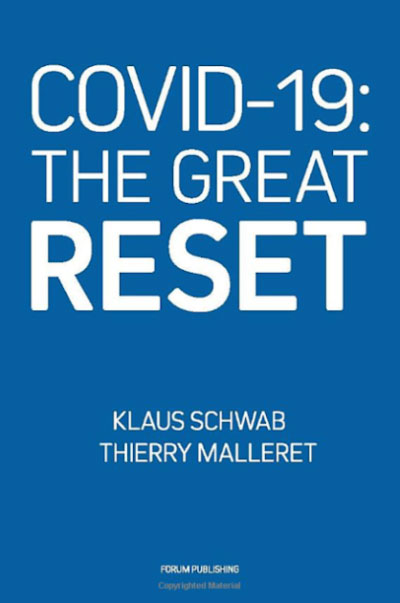SYNOPSIS
Since it made its entry on the world stage, COVID-19 has dramatically torn up the existing script of how to govern countries, live with others and take part in the global economy. Written by World Economic Forum Founder Klaus Schwab and Monthly Barometer founder and author Thierry Malleret, COVID-19: The Great Reset considers its far-reaching and dramatic implications on tomorrow’s world. It is a guide for anyone who wants to better understand how the novel coronavirus could cause so much disruption and suffering, and what changes are needed to creat a more inclusive, resilient and sustainable world.
The book provides a worrying, yet hopeful analysis. COVID-19, as the greatest public health crisis of the century has led to enormous economic devastation and made exisiting inequities worse. But the power of human beings lies in their foresight, ingenuity and – at least to a certain extent – to take their destiny into their own hands and plan for a better future. This book shows us where to start.
INTRODUCTION
The worldwide crisis triggered by the coronavirus pandemic is without modern parallel. We cannot be accused of hyperbole when we say it is plunging our world in its entirety and each of us individually into the most challenging times we’ve faced in generations. We will be dealing with its fallout for years, and many things will change forever. It is bringing economic disruption of monumental proportions, creating a dangerous and volatile period on multiple fronts – politically, socially, geopolitically – raising deep concerns about the environment and also extending the reach, (pernicious or otherwise), of technology into our lives. No industry or business will be spared from the impact of these changes. Millions of companies risk disappearing and many industries face an uncertain future; a few will thrive. On an individual basis, for many, life as they’ve always known it, is unravelling at alarming speed. But deep, existential crises also favour introspection and can harbour the potential for transformation. The fault-lines of the world – most notably social divides, lack of fairness, absence of co-operation, failure of global governance and leadership – now lie exposed as never before; and the time for re-invention will soon be upon us. A new world will emerge, the contours of which are for us both to imagine and to draw.
At the time of completing this manuscript (June 2020), we hope that the worst of the pandemic is over, but we can’t know for sure (WE MAY BE IN THE MIDST OF ANOTHER WAVE), and many of us are pondering when things will eventually return to normal. Our short response: never. Nothing will ever return to the ‘broken’ sense of normalcy that prevailed prior to the crisis because the Coronavirus pandemic marks a fundamental inflection point in our global trajectory. Some analysts call it a major bifurcation, others refer to a deep crisis of “biblical” proportions, but the essence remains the same: the world as we knew it in the early months of 2020 is no more, dissolved in the aftermath of the pandemic. Radical changes of such consequence are coming that some pundits have referred to a Before Coronavirus (BC) and after Coronavirus (AC) era. Over the coming months and years, we will be surprised by both the rapidity and unexpected nature of these changes – as they conflate with each other, they will provoke second, third, fourth and more-order consequences, cascading effects and unforeseen outcomes. In so doing, they will shape a “new normal” radically different from the one we will be progressively leaving behind. Many of our beliefs and assumptions about what the world could or should look like will be shattered in the process.
However, broad and radical pronouncements (like “everything will change”) and an all or nothing, black and white analysis should be deployed with great care. Of course, reality will be much more nuanced. By itself, the pandemic may not completely transform the world, but it is likely to accelerate many of those changes already taking place before it erupted; and many of these changes will in turn set in motion other changes. The only certainty about these: they won’t be linear and sharp discontinuities will prevail. The Great Reset is an attempt to identify and shed light on the changes ahead, and to make a modest contribution in terms of delineating what their more desirable and sustainable form might resemble.
Let’s begin by putting things into perspective: human beings have been around for about 200,000 years, the oldest bacteria for billions of years and viruses for at least 300 million years. This means that pandemics have always existed and been an integral part of human history – they are in fact the rule, not the exception. Because of their inherently disruptive nature, epidemics throughout history have proven to be a force for lasting and often radical change: sparking riots but also triggering innovations, redrawing maps of nations and often paving the way for revolutions. Also, more authoritative measures to attempt to contain them have always been part of the policy arsenal. Thus, there is nothing new about the confinement and lockdown imposed upon much of the world in the spring of 2020. They have been common practice for centuries. The earliest forms of confinement came with the quarantines instituted in an effort to contain the Black Death that, between 1347 and 1351, killed about a third of all Europeans. Coming from the word quaranta (which means “forty” in Italian), the idea of confining people for 40 days originated without the authorities really understanding what they wanted to contain, but the measures were one of the first forms of “institutionalized public health” that helped legitimatize the “accretion of power” by the modern state.[1] The period of forty days has no medical foundation; it was chosen for symbolic and religious reasons: both the Old and New Testaments often refer to the number forty in the context of purification: in particular the forty days of Lent and the forty days of flood in Genesis.
Epidemics are by nature divisive and traumatising, and it is unlikely to be different this time. What we are fighting against is invisible; our family, friends and neighbours may all become sources of infection; those everyday rituals that we cherish, like meeting a friend in a public place, may become a vehicle for transmission; and the authorities that try to keep us safe by enforcing confinement measures are often perceived as agents of oppression. Throughout history there has been an important and recurring pattern: the search for scapegoats and placing the blame firmly on the outsider. In medieval Europe, the Jews were almost always among the victims of the most notorious pogroms provoked by the plague. One tragic example to illustrate this point: in 1349, two years after the “Black death” had started to rove across the continent, in Strasbourg on Valentine’s day, Jews, who’d been accused of spreading the plague by polluting the wells of the city, were asked to convert. About 1,000 refused and were burnt alive. During that same year, Jewish communities in other European cities were wiped out, forcing them to massively migrate to the eastern part of Europe (in Poland and Russia), permanently altering the demography of the continent in the process. What is true for European anti-Semitism also applies to the rise of the absolutist state, the gradual retreat of the church and many other historical events that can be attributed in no small measure to pandemics. The change were so diverse and widespread that it led to “the end of an age of submission”, bringing feudalism and serfdom to an end and ushering in the era of Enlightenment. Put simply: “the Black Death may have been the unrecognized beginning of modern man.”[2] If such profound social, political and economic changes could be provoked by the plague in the medieval world, could the Covid-19 pandemic mark the onset of a similar turning point with long lasting and dramatic consequences for our world today?
To begin elaborating a meaningful response, we need a conceptual framework (or a simple mental map) to help us reflect on what’s coming and guide us in making sense of it. Insights offered by history can be particularly helpful. This is why we so often search for a reassuring “mental anchor” that can serve as a benchmark when we are forced to ask ourselves tough questions about what will change and to what extent. In doing so, we look for precedents, with questions such as: Is the pandemic like the Spanish flu of 1918 (estimated to have killed more than 50 million people worldwide in three successive waves)? Could it look like the Great Depression that started in 1929? Is there any resemblance with the psychological shock inflicted by 9/11? Are there similarities with what happened with SARS in 2003 and H1N1 in 2009 (albeit on a different scale)? Could it be like the great financial crisis of 2008, but much bigger? The correct, albeit unwelcome, answer to all of these is no! None fits the reach and pattern of the human suffering and economic destruction caused by the current pandemic. The economic fallout in particular bears no resemblance to any crisis in modern history. As pointed out by many heads of state and government in the midst of the pandemic, we are at war, but with an enemy that is invisible and of course metaphorically: “If what we are going through can indeed be called a war, it is certainly not a typical one. After all, today’s enemy is shared by all of humankind, and the mobilization of state resources must go hand in hand with the demobilization of most of the population”.[3]
That said, WWII could even so be one of the most relevant mental anchors in the struggle/effort to assess what’s coming next. WWII was the quintessential transformational war, triggering not only fundamental changes to the global order and the global economy, but also entailing radical shifts in social attitudes and beliefs that eventually paved the way for radically new policies and social contract provisions (like women joining the workforce before becoming voters). There are obviously fundamental dissimilarities between a pandemic and a war (that we will consider in some details in the following pages), but the magnitude of their transformative power can be comparable. Both have the potential to be a transformative crisis of previously unimaginable proportions. However, we must beware of superficial analogies. Even in the worst case horrendous scenario, Covid-19 will kill far fewer people than the Great Plagues or WWII did. Furthermore, today’s economy bears no resemblance to those of past centuries that relied on manual labour and farmland or heavy industry.
However, in today’s highly interconnected and interdependent world, the impact of the pandemic will, as in the past, go well beyond the (already staggering) statistics/numbers relating ‘simply’ to death, unemployment and bankruptcies.
The Great Reset is written and published in the midst of a crisis whose consequences will unfold over many years to come. Little wonder that we all feel somewhat bewildered – a sentiment so understandable when an extreme shock strikes bringing with it the disquieting certainty that its outcomes will be both unexpected and unusual. This strangeness is well captured by Albert Camus in his novel “The Plague” (written in 1947): “In one sense all these changes were so extraordinary and had happened so quickly that it was not easy to consider them as normal and lasting.” Now that the unthinkable is upon us, what will happen next, in the immediate aftermath of the pandemic and then in the foreseeable future?
It is of course much too early to tell with any reasonable accuracy what Covid-19 will entail in terms of “momentous” changes, but the objective of this book is to offer some coherent and conceptually sound guidelines about what might lie ahead, and to do so in the most comprehensive manner possible. Our aim is to help our readers grasp the multifaceted dimension of the changes that are coming. At the very least, as we will argue, the pandemic will accelerate systemic changes that were already apparent prior to the crisis: the partial retreat from globalization, the growing decoupling between the US and China, the acceleration of automation, the concerns about heightened surveillance, the growing appeal of wellbeing policies, rising nationalism and the subsequent fear of immigration, the growing power of tech, the necessity for firms to have an even stronger online presence, among many others. But it could go beyond a mere acceleration by altering things that previously seemed unchangeable. It might thus provoke changes that would have seemed inconceivable before the pandemic struck: new forms of monetary policy like helicopter money (already a given), the reconsideration/recalibration of some of our social priorities and an augmented search for the common good as a policy objective, the notion of fairness acquiring political potency, radical welfare and taxation measures, drastic geopolitical realignments.
The broader point is this: the possibilities for change and the resultant new order are now unlimited and only bound by our imagination for better or for worse. Societies could be poised to become either more egalitarian or more authoritarian, or geared towards more solidarity or more individualism, to favour the interests of the few or the opposite; economies, when they recover, could take the path of more inclusivity and be more attuned to the needs of our global commons, or they could return to functioning as they did before. You get the point: we should take advantage of this unprecedented opportunity to reimagine our world, in a bid to make it a better one, as it emerges on the other side of this crisis.
We are conscious that attempting to cover the scope and breadth of all the issues addressed in this book is an enormous task that may not even be possible. The subject and all the uncertainties attached to it are gargantuan and could have filled the pages of a publication five times the size of this one. That was not the objective: we wanted to write a relatively concise and simple book to help the reader understand what’s coming in a multitude of domains. To interrupt the flow of the text as little as possible the reference information appears at the end of the book and direct attributions have been kept to a minimum. Being published at a time that is so close to the crisis and when other waves of infection may still come, it will continuously evolve to reflect on the volatile, uncertain and ever-changing nature of the subject matter. Future editions will be continuously updated based on new findings, new research, policy measures and on-going feedback from readers.
This volume is a hybrid between a light academic book and an essay. It includes theory and practical examples, but is chiefly explanatory containing many conjectures and ideas about what the post-pandemic world might, and perhaps should look like. although it is neither a work of theory nor a compilation of existing methods for trying to anticipate or understand the future and how to deal with it. It offers neither simple generalizations nor recommendations for a world moving to a new normal, but we trust it will be useful.
The book is structured around three main chapters, offering a panoramic overview of the future landscape. The first provides an assessment of what the impact of the pandemic will be on five key macro categories: economic, societal, geopolitical, environmental and technological. The second assesses the impact in micro terms: on specific industries and companies. The third hypothesizes about what the consequences might be at the level of the individual.
[1] Frank Snowden, “Epidemics and Society: From the Black Death to the Present”, Yale University
[2] Barbara Tuchman, “A Distant Mirror – The Calamitous 14th Century”, Penguin Random House, 1987
[3] https://www.project-syndicate.org/commentary/global-socioeconomic-landscape-after-covid19-pandemic-by-javier-solana-2020-03
Become a member of the Monthly Barometer community! Subscribe here.



